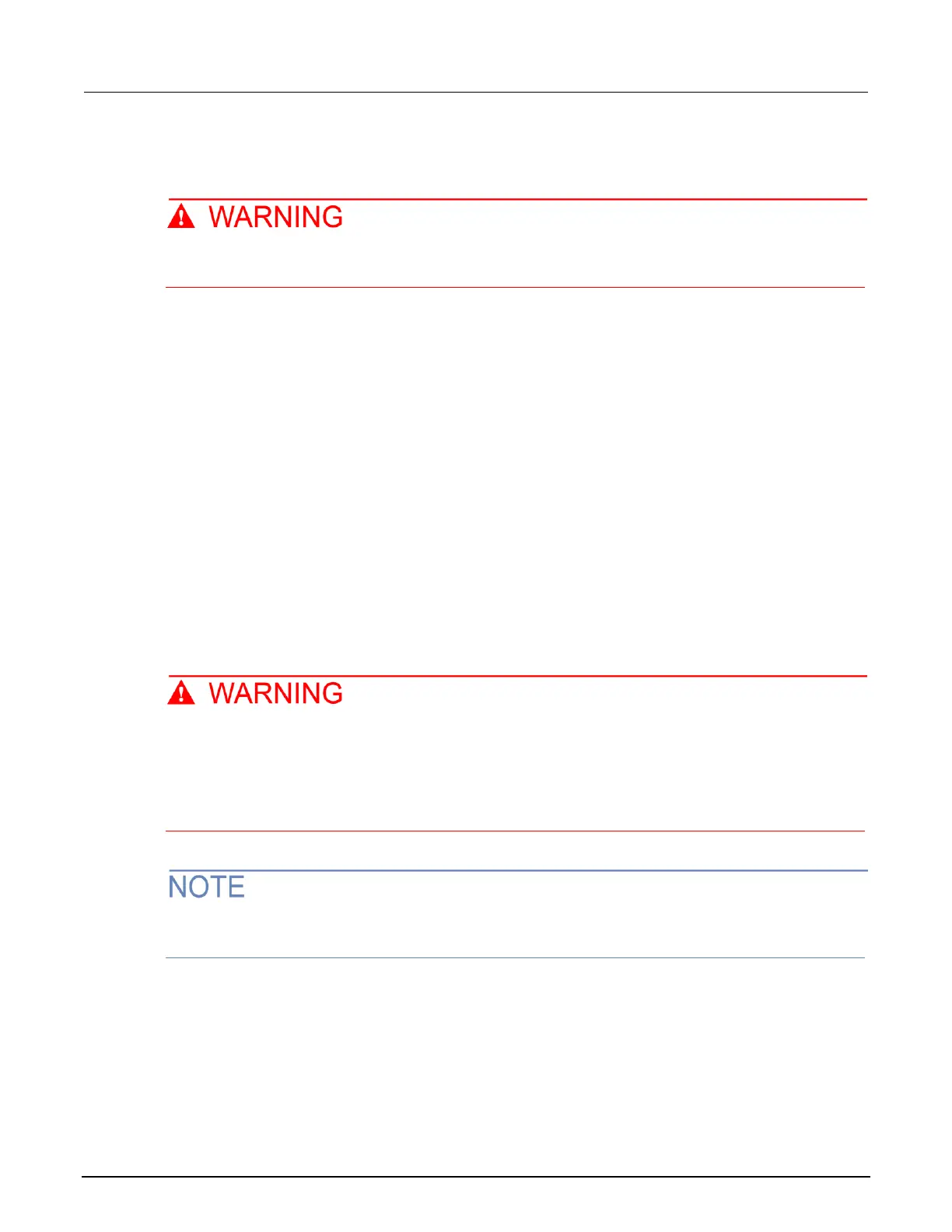Guard
GUARD is at the same potential as output HI. If hazardous voltages are present at output HI,
they are also present at the GUARD terminal.
The rear-panel GUARD terminals are always enabled and provide a buffered voltage that is at the
same level as the HI (or SENSE HI for remote sense) voltage. The purpose of guarding is to eliminate
the effects of leakage current (and capacitance) that can exist between HI and LO. In the absence of
a driven guard, leakage in the external test circuit could be high enough to adversely affect the
performance of the SMU.
Leakage current can occur through parasitic or nonparasitic leakage paths. An example of parasitic
resistance is the leakage path across the insulator in a coaxial or triaxial cable. An example of
nonparasitic resistance is the leakage path through a resistor that is connected in parallel to the
device-under-test (DUT).
Guard connections
Guard is typically used to drive the guard shields of cables and test fixtures. Guard is extended to a
test fixture from the cable guard shield. Inside the test fixture, the guard can be connected to a guard
plate or shield that surrounds the device-under-test (DUT).
A safety shield must be used whenever hazardous voltages (>30 V
RMS
, 42 V
PEAK
) will be
present in the test circuit. To prevent electrical shock that could cause injury or death, never
use the 2600B in a test circuit that may contain hazardous voltages without a properly
installed and configured safety shield. The figures in this topic show the metal case of a test
fixture being used as a safety shield.
See “Guarding and shielding” in the Series 2600B User's Manual for details about guarded test
connections.

